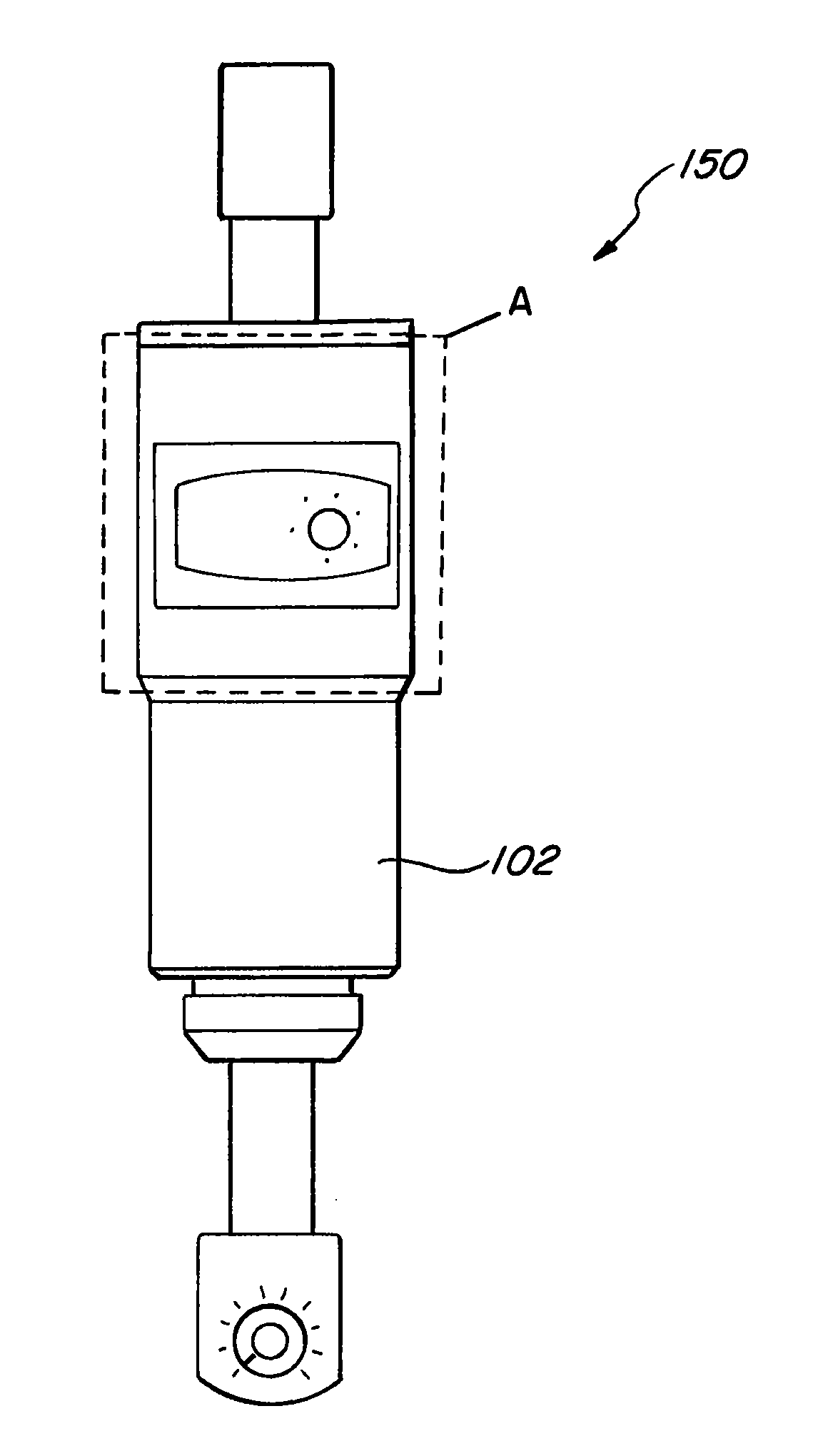Novel enhanced methods for mimicking human gait with prosthetic knee devices
- Summary
- Abstract
- Description
- Claims
- Application Information
AI Technical Summary
Benefits of technology
Problems solved by technology
Method used
Image
Examples
Embodiment Construction
[0036]In one embodiment, the present invention includes, for example, an actuator 150. The actuator 150 can be part of a prosthetic joint, which in turn can be used as part of a prosthetic device. The actuator 150 includes, for example, a hydraulic damping cylinder 102. As seen in FIG. 2 (which is a cross-sectional view of the portion A in FIG. 1, the hydraulic damping cylinder 102 includes a spool valve 104 and reed check valve 106. As seen in FIG. 3, the hydraulic damping cylinder 102 also includes a return spring 105 and a solenoid 108.
[0037]When the solenoid 108 is energized, the solenoid 108 opens the spool valve 104 and permits fluid to flow through the spool valve 104. This reduces the damping of the hydraulic damping cylinder 102 to permit easy bending of the prosthetic joint 100. However, when the solenoid 108 is de-energized, the spool valve 104 can be closed by return spring 105, and no fluid flows through the spool valve 104. This increases the damping of the hydraulic d...
PUM
 Login to View More
Login to View More Abstract
Description
Claims
Application Information
 Login to View More
Login to View More - R&D
- Intellectual Property
- Life Sciences
- Materials
- Tech Scout
- Unparalleled Data Quality
- Higher Quality Content
- 60% Fewer Hallucinations
Browse by: Latest US Patents, China's latest patents, Technical Efficacy Thesaurus, Application Domain, Technology Topic, Popular Technical Reports.
© 2025 PatSnap. All rights reserved.Legal|Privacy policy|Modern Slavery Act Transparency Statement|Sitemap|About US| Contact US: help@patsnap.com



